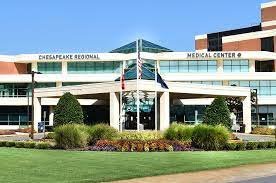Trauma Center Feasibility Analysis
“Following a mass casualty event in our area a few years ago, we knew it was time to build a trauma program. It was a rallying cry for us to start putting plans into action. Bishop+Associates was integral in helping us objectively and efficiently evaluate the potential for a viable Level II trauma center in the region, providing us with the information our Board needed to move forward.”
No One Knows Trauma Centers Better
Trauma centers are expensive, complex, and demanding hospital services, and each potential trauma center presents unique circumstances and challenges. B+A has conducted hundreds of trauma center feasibility studies over the past decades. We apply our broad and deep experience with trauma care across the nation to your hospital’s specific culture and objectives. If a trauma center is feasible, you end up with a solid plan for its success that includes a sense of partnership with your medical staff. If not, you will have a clear understanding why, as well as an idea of how you could overcome your specific challenges in the future.
Our Process Is Collaborative and Exhaustive
Assessing the feasibility of a new trauma center requires a collaborative, team-building approach. This is of particular importance with the medical staff, as they have strong feelings and often misconceptions about the impact of a trauma center on their practice and call schedule. We keep “hearts and minds” at the center of the process. We strongly believe that trauma care exemplifies the very best of healthcare, with the trauma program often setting the standard for quality in the hospital and bringing out the best in other surgical and medical departments.
The reason for our excellent track record and reputation is our approach. We explore all possibilities for determining the long-term success of building a new trauma center and often present a series of options or stages for hospital leadership to consider. Our clients know that the results are thorough and understandable, and by the end of the project there will be no surprises because leadership is informed throughout the process.
Components of the Project
The components of a typical trauma center feasibility project may include the following:
Identification and mapping of a defined trauma service area based on regional trauma system rules, distance between hospitals and other trauma centers, expected population growth, and other trauma patient referral patterns.
Analysis of the regional trauma market to determine likely volume, severity of injury, and payer mix of proposed trauma service area.
Analysis of hospital data, trauma registry data (if applicable), EMS data, and state hospital discharge data.
Evaluation of medical staff resources and creation of a plan to assure medical support for a trauma center.
Assessment of the economic feasibility and sustainability of a trauma center and preparation of an easy-to-use pro forma that includes direct and indirect costs.
Development of a gap analysis tool that hospitals can use to assess readiness for trauma center operations.
Strategies for maximizing the “halo effect” to enhance other services at your hospital.
Concise reports and recommendations for the feasibility of a new trauma center.
We’ve Got Your Back For The Long Term
B+A traditionally provides strong support to former clients. Our clients will tell you they feel supported by us as long as needed, rarely at added cost. We know that hospitals often need months or even years to fully digest the feasibility results and make the decision to proceed with the initiative. If circumstances change, we are equipped to reevaluate the feasibility of the trauma center endeavor.
We regularly provide ongoing advice on medical staff arrangements by specialty, recruitment of trauma surgeons, and strategies for working with the state or regional agency governing trauma, as well as other issues that arise as you develop your trauma center. We stand by our work.

